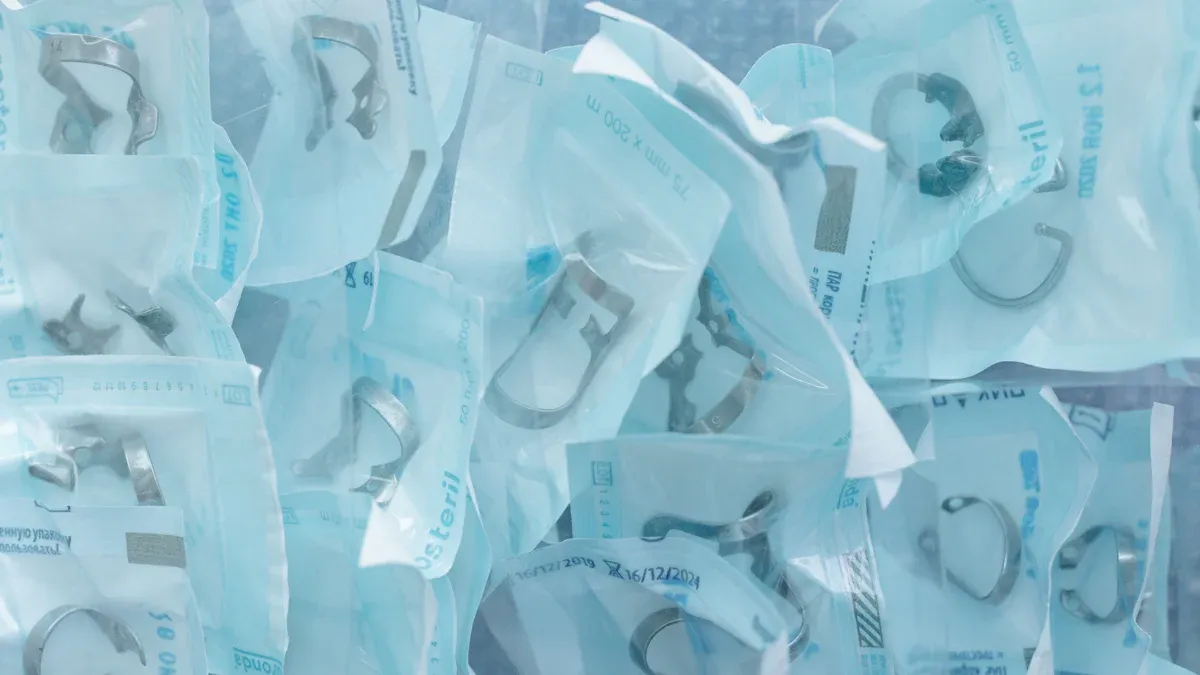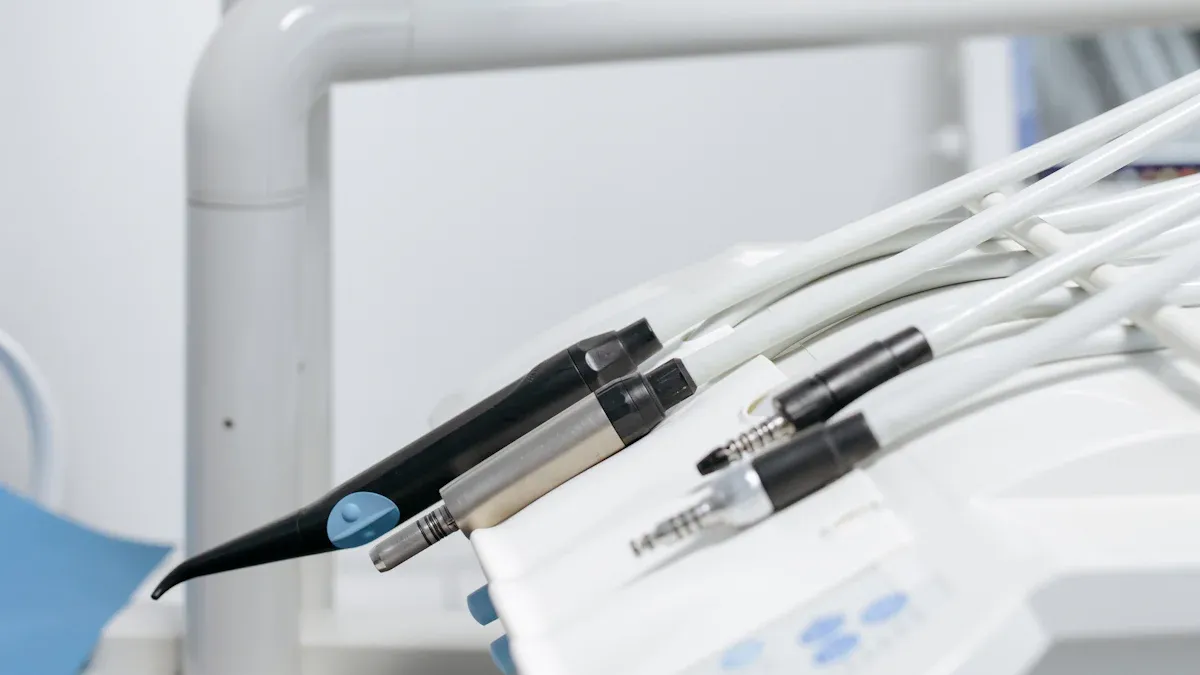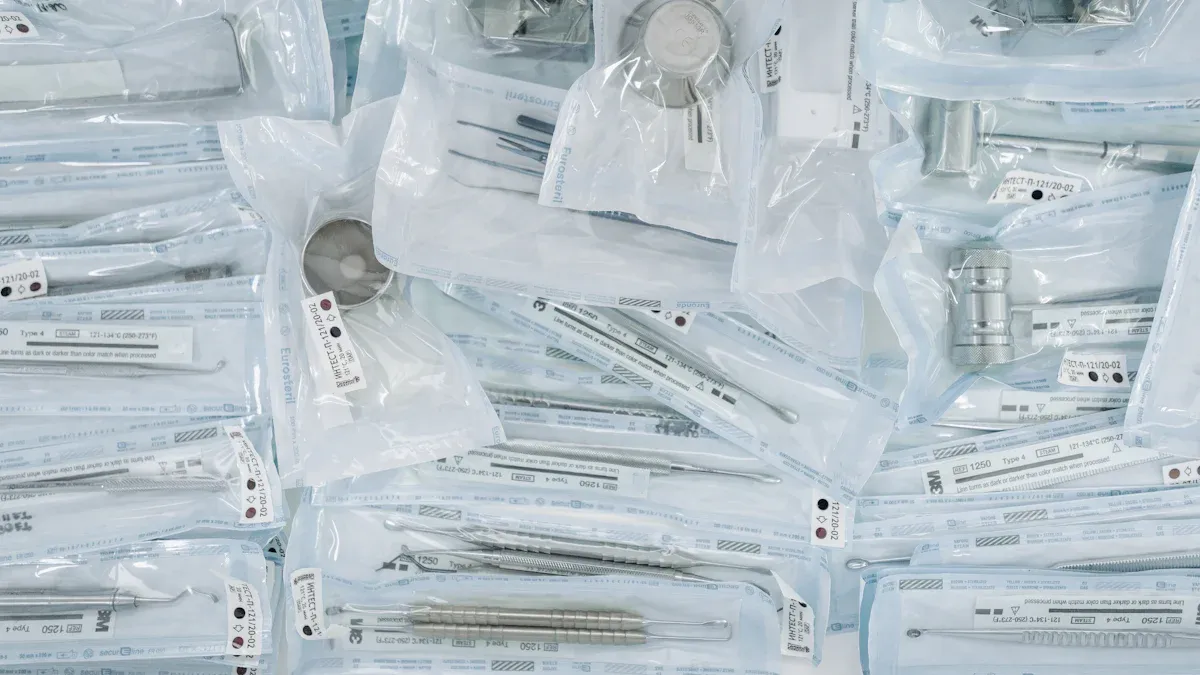What Is PET Shrink Tubing and How Does It Work for Implantable Device Sealing

PET Shrink Tubing for Implantable Device Sealing is an excellent solution to protect and seal sensitive implantable devices. This material is highly safe for patients, ensuring safety in medical applications. PET Shrink Tubing for Implantable Device Sealing is resistant to chemicals and physical stress, making it ideal for medical products. When manufacturers use PET Shrink Tubing for Implantable Device Sealing, they create strong barriers that prevent contamination. Additionally, PET Shrink Tubing for Implantable Device Sealing provides reliable electrical insulation in critical areas.
Key Takeaways
PET shrink tubing covers implantable devices tightly. It keeps out fluids, germs, and stops damage. The tubing is strong and clear. It does not break from heat, chemicals, or pressure. This makes it last a long time. Medical-grade PET tubing is safe for the body. It meets strict rules for safety and biocompatibility. It keeps electrical parts covered. This stops short circuits and helps the device work well. PET tubing can be cleaned many times. It does not lose its strength or shape. This makes it great for medical use.
PET Shrink Tubing Basics

What Is PET Heat Shrink Tubing
PET heat shrink tubing is a special plastic tube. It is made from polyethylene terephthalate. This tubing is made to shrink when it gets hot. It wraps tightly around things like wires and medical devices. The tubing starts out wide, so it slides over parts easily. When you heat it, the tubing gets smaller and fits tightly. This makes a strong seal to protect the device. The tubing covers every part of the device. It gives good insulation and keeps things safe.
PET heat shrink tubing is clear and strong. It also resists chemicals very well. It is stronger than polyolefin and elastomer tubing. Polyolefin tubing bends more, but PET heat shrink tubing is tougher and clearer. Elastomer tubing stretches more, but PET heat shrink tubing is stronger and stays clear.
Material Properties
PET heat shrink tubing has special features for tough jobs. It is very strong and does not tear easily. The shrink ratio is often 2:1 or 3:1. This helps the tubing fit tightly over many shapes. It can handle heat up to 200°C. This means it can be sterilized. PET heat shrink tubing also blocks electricity well. It keeps electrical parts safe.
Characteristic / Metric | Description / Value |
|---|---|
Tensile Strength | High mechanical strength to resist tearing and deformation, ensuring durability and secure insulation. |
Shrink Ratio | Commonly 2:1 or 3:1, enabling snug fit over components. |
Temperature Resistance | Up to 200°C for high-temperature PET, suitable for sterilization. |
Dielectric Strength | Greater than 4000 V/mil, providing excellent electrical insulation. |
Chemical Resistance | Resistant to disinfectants, sterilization agents, and bodily fluids. |
Moisture Resistance | Maintains insulation and structural integrity in humid or wet environments. |
Flexibility | Especially in cross-linked and ultra-thin wall types, allowing conformity to complex shapes. |
Biocompatibility | Compliant with ISO 10993 and USP Class VI standards. |
Sterilization Compatibility | Compatible with ethylene oxide, gamma radiation, and autoclaving. |
Wall Thickness | Ranges from ultra-thin (0.0064 mm) to thicker walls (up to 0.05 mm). |
Dimensional Fit | Expanded diameters typically 25% larger than the object for easy application. |
Cross-Linking | Enhances strength, flexibility, and thermal stability. |
PET heat shrink tubing is safe for medical devices. It meets strict rules for biocompatibility. The tubing does not get damaged by most acids or oils. It does not catch fire easily and has no halogen.
How It Shrinks
PET heat shrink tubing shrinks when heated in a special way. First, the tubing is made and stretched while hot. This makes it keep its bigger shape. When you heat it again, it goes back to its smaller size. This makes the tubing wrap tightly around the object. PET heat shrink tubing needs at least 60°C to start shrinking. It shrinks fully above 125°C. This helps it fit well for medical and industrial uses.
Polyethylene terephthalate heat shrink tubing is tough and clear. It also resists chemicals. These features make it a top choice for sealing implantable devices and other important uses.
PET Shrink Tubing for Implantable Device Sealing

Sealing and Protection
PET shrink tubing makes a tight barrier around important parts. It covers things like electrodes, sensors, and connectors. This keeps them safe from dirt and harsh places. The tubing blocks fluids, germs, and other bad things. In medical devices, this barrier keeps patients safe and helps devices last longer.
Researchers made special devices with polyester that have tiny holes, as small as 0.65 μm. These devices stay strong with a pull force over 2N. They can also handle flow pressure under 1N. These facts show PET heat shrink tubing stays strong and seals well in real life. The tubing does not break down from chemicals or stress. This keeps implantable devices safe for a long time.
PET heat shrink tubing works like a shield. It stops bad things from touching important device parts. This is very important for devices inside the body. Body fluids and tissue can hurt the device if not protected.
Electrical Insulation
PET heat shrink tubing gives great electrical insulation for devices. It stops short circuits and keeps wires from touching each other. The tubing has high dielectric strength. This keeps electric signals safe and apart. This is very important for things like pacemakers and neurostimulators.
PET heat shrink tubing keeps insulation even when it gets hot or cold, like during cleaning.
The tubing does not get weak from cleaning chemicals or sterilizers.
It also keeps out water and stands up to rubbing, so it lasts longer.
PET shrink tubing makes sure electrical parts work safely in tough medical places.
This protection is needed in medical work. If a device fails, it can be very bad. PET heat shrink tubing is known for giving steady insulation, even in small or tricky devices.
Mechanical Support
PET shrink tubing also gives strong support. Its thin walls and strength help support catheters, coils, and marker bands. It does not make them bulky. By changing the tubing thickness, engineers can make some parts bendy and some stiff.
PET heat shrink tubing has high hoop strength. This helps keep balloon catheter bonds strong and stops braid ends from coming apart. This support keeps medical devices working right during use. Tests show PET materials stay strong and stiff, even after lots of use and changes in the environment.
In medical devices, PET shrink tubing is both a cover and a support. It helps devices bend, stretch, and get used many times. This makes it a good choice for things put inside the body.
Medical-Grade PET Heat Shrink Tubing Benefits
Biocompatibility
Medical-grade PET heat shrink tubing is very safe for the body. It is made to meet tough rules like ISO 10993 and USP Class VI. These rules show the tubing is safe to touch skin and tissue. The tubing does not react with body fluids or tissue. This helps keep patients safe in all medical uses. The tubing uses materials that are not toxic. This lowers health risks and stops bad reactions. Its smooth surface helps stop rubbing and tissue harm. This makes it good for things like catheters and guidewires. The tubing also helps stop germs from growing. This keeps things clean and sterile. These features make medical-grade PET heat shrink tubing a good pick for devices put inside the body.
Medical-grade PET heat shrink tubing acts as a safe barrier. It protects both the device and the patient.
Property / Test Aspect | Result / Standard Reference |
|---|---|
Biocompatibility Standards | ISO 10993, USP Class VI |
Regulatory Certifications | FDA, CE approvals |
Non-toxicity | No adverse reactions in medical use |
Durability and Strength
Medical-grade PET heat shrink tubing is strong and lasts a long time. It keeps its strength even after many times being cleaned. Its special structure helps it resist damage and wear. Other materials can get weak in tough places, but this tubing does not. It can handle very hot and very cold temperatures. It works from -196°C to 135°C for a long time. It can also take up to 200°C for a short time. This makes it good for hard jobs in medicine and space.
Property | PET Heat Shrink Tubing | Alternative Materials |
|---|---|---|
Durability | Exceptional due to semi-crystalline structure | Often less durable |
Tensile Strength | Maintains strength after multiple sterilizations | Often weakens after sterilization |
Longevity | Reliable in harsh environments | Shorter lifespan in demanding conditions |
Sterilization Compatibility
Medical-grade PET heat shrink tubing can be cleaned in many ways. It can handle ethylene oxide, gamma rays, autoclaving, and electron beam cleaning. It does not lose its stretch or strength after cleaning. The tubing keeps its stretch above 80% after being cleaned. This means it stays strong and does not break. It meets ISO 17665-1:2023 rules for cleaning. Quality checks make sure the tubing is safe after many cleanings. This is important for tubing used in nerve repair and other careful jobs. The tubing keeps working well, even after tough cleaning.
Medical-grade PET heat shrink tubing does not shrink after at least 25 cleanings.
It works with all cleaning methods used in hospitals and clinics.
The tubing stays safe and high quality after each cleaning.
Regulatory and Quality Standards
Medical Device Compliance
Medical-grade PET heat shrink tubing must follow strict rules. These rules help keep patients safe. They also make sure the tubing works well in medical devices. Many groups make these rules. Some important ones are ISO 13485, FDA, and RoHS.
ISO 13485 is about quality systems for medical devices. It covers safety, quality, and how well things work.
FDA rules check if medical devices are safe and work right. PET tubing helps devices pass these checks by giving good electrical safety and strong build.
RoHS makes sure the tubing does not have bad things like lead or mercury.
Manufacturers follow these rules to show their products are safe and good quality. Medical-grade PET heat shrink tubing must also prove it is strong, bends well, and is safe inside the body.
Biocompatibility Testing
Biocompatibility is very important for medical-grade PET heat shrink tubing. Tests check if the tubing is safe for the body and does not hurt people. Biocompatibility rules like ISO 10993 and USP Class VI guide these tests.
ISO 10993 checks if the tubing reacts with skin or tissue.
USP Class VI tests if the tubing is toxic or causes bad reactions.
FDA looks at biocompatibility test results before letting devices be used.
These tests help make sure the tubing will not cause harm. Biocompatibility testing keeps patients safe and meets top quality rules.
Manufacturing Quality
Making medical-grade PET heat shrink tubing needs high quality. Factories use strong checks to keep quality high. They test for strength, bending, and cleaning resistance.
Quality teams check every batch for problems.
They test the tubing for strength and electrical safety.
FDA rules say all tests and checks must be recorded.
Good manufacturing keeps the tubing safe and dependable. Quality systems help meet biocompatibility rules and keep patients safe. Making medical devices needs these steps to make sure every tubing piece is safe and good quality.
PET shrink tubing is special for sealing implantable devices. It gives great safety and works very well. Medical engineers like its strong barrier and that it is safe for the body. It also meets tough rules for medical use.
PET shrink tubing saves money because it helps devices last longer and need less fixing.
Hospitals pick it because it costs less over time and works well for many years.
PET shrink tubing is trusted by people who want the best for sealing medical devices.
FAQ
What makes PET shrink tubing suitable for implantable devices?
PET shrink tubing is very strong and resists chemicals. It is safe to use in the body. These features help keep device parts safe inside people. Doctors trust PET tubing because it follows strict safety rules.
Can PET shrink tubing withstand repeated sterilization?
Yes. PET shrink tubing keeps its shape and strength after many cleanings. Hospitals use heat, special gas, or radiation to clean it. The tubing stays safe and works well after many uses.
How does PET shrink tubing improve device safety?
PET shrink tubing makes a tight cover around device parts. This cover stops fluids and germs from getting in. It also keeps electricity from jumping between wires. This lowers the chance of problems in medical implants.
Is PET shrink tubing transparent?
Yes. PET shrink tubing is usually clear. This lets doctors and engineers see the device parts after sealing. It helps them check if everything is in the right place.
What devices commonly use PET shrink tubing?
Doctors and engineers use PET shrink tubing in pacemakers, neurostimulators, catheters, and guidewires. The tubing protects wires, connectors, and sensitive electronics in many implantable medical devices.

